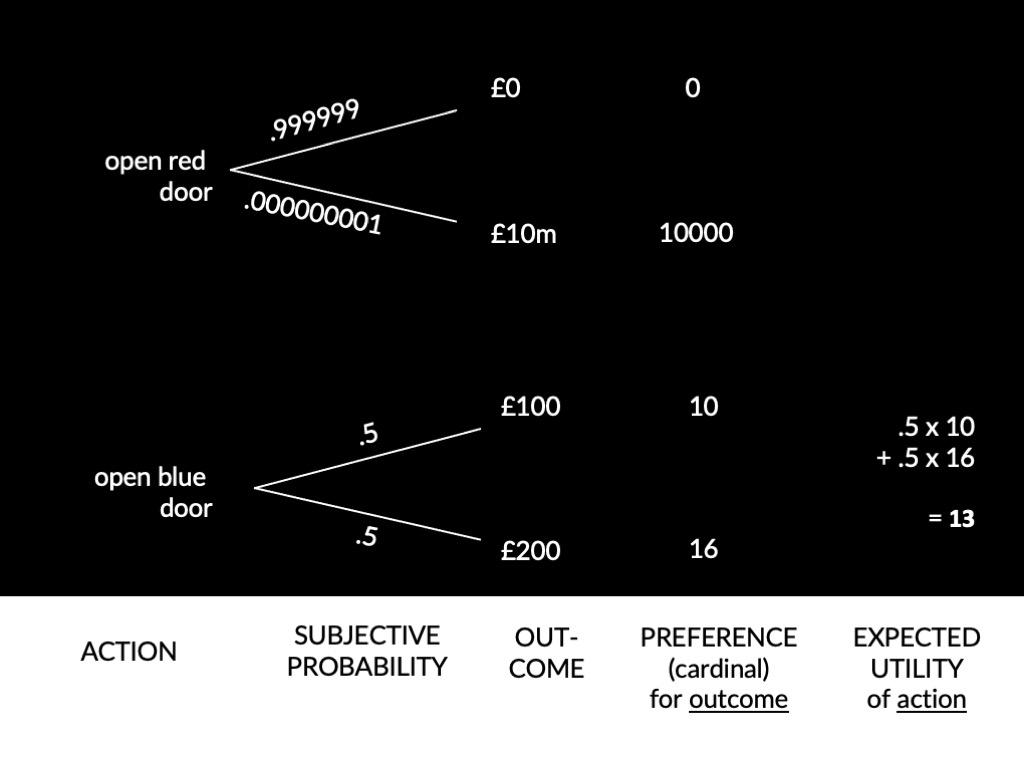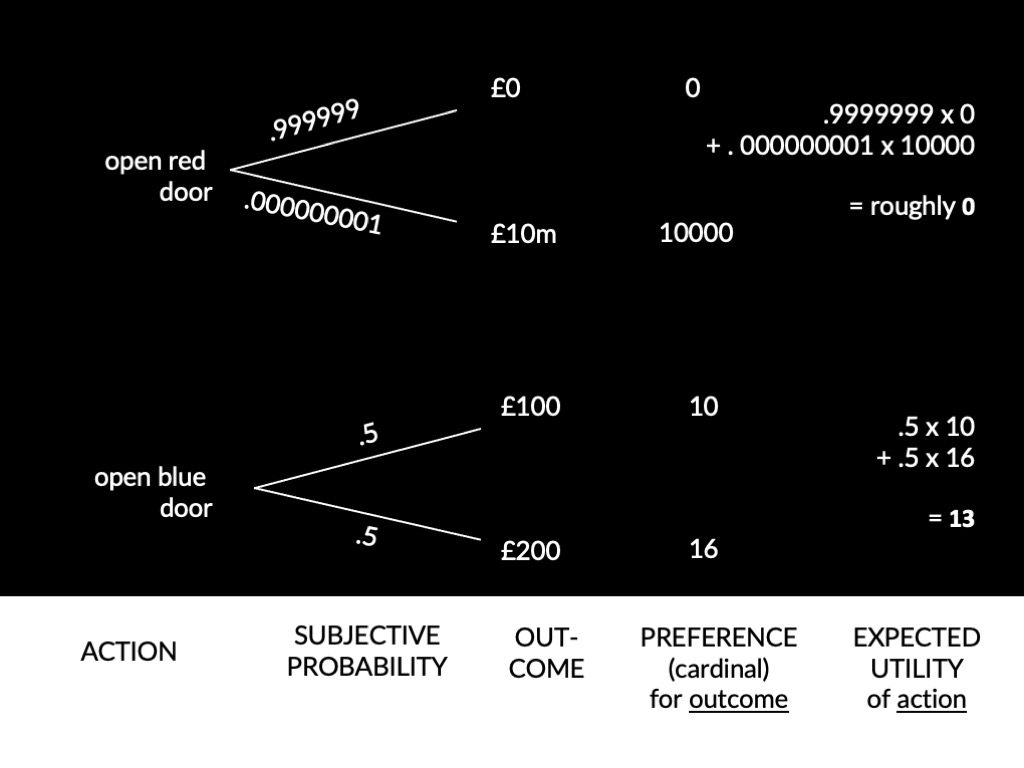Click here and press the right key for the next slide.
(This may not work on mobile or ipad. You can try using chrome or firefox, but even that may fail. Sorry.)
also ...
Press the left key to go backwards (or swipe right)
Press n to toggle whether notes are shown (or add '?notes' to the url before the #)
Press m or double tap to slide thumbnails (menu)
Press ? at any time to show the keyboard shortcuts
Expected Utility

decision theory
How do rational agents decide which of several available actions to perform?





Terminology
actions have outcomes
(Jeffrey: outcome = ‘consequence’)
which outcome an action causes depends on **conditions**
subjective probabilities attach to conditions.
preferences rank outcomes
expected utilities attach to actions.
(Jeffrey: expected utility = ‘estimated desirabilities’)
Jeffrey (1983)
so far: the representation
next step: the theory
This book has ‘a philosophical end: elucidation of the notions of subjective probability and subjective desirability or utility’
(Jeffrey, 1983, p. xi)
‘we [...] view
subjective values and probabilities
as interrelated constructs of decision theory’
(Davidson, 1974, p. 146)